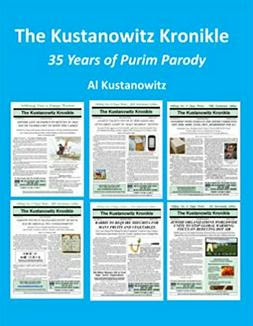After years of planning and construction, the National Museum of American Jewish History held a gala opening ceremony last Sunday on Philadelphia's Independence Mall, just across from the Liberty Bell.
The ceremony attracted over 1,000 donors, politicians, and entertainers, including Vice-President Joe Biden and Pennsylvania Governor Ed Rendell, Jerry Seinfeld, Barbra Streisand, and Bette Midler.
Rabbi Irving (Yitz) Greenberg affixed a mezuzah to the doorpost of the building, which opens to the public on November 26.
Josh Perelman, Deputy Curator of the museum, explained that the museum's goal was to show visitors the lived experience of being a Jew throughout American history.
As David O'Reilly reported in
philly.com, the website of The Philadelphia Inquirer,
After entering on Market Street, visitors are invited to start their tour on the fourth floor, in the year 1654, and descend through time, floor by floor, to the present, inspecting more than a thousand artifacts along the way.
A great majority of the items are secular - immigration documents from Ellis Island, a sewing machine, the upright piano at which the Russian-born, agnostic, but ethnically Jewish Berlin penned such tunes as "White Christmas," "Easter Parade," and "God Bless America."
But here, too, are examples of the Torah scrolls, bibles, prayer books, menus, candlesticks, kiddush cups, bat mitzvah dresses, and yarmulkes that have helped sustain Judaism in America for three and a half centuries.
"I think we did a pretty good job," said Perelman.
The tour begins with artifacts of Jewish life in the colonies. Here, behind glass, is a 1737 Torah from Savannah, Georgia; a plain, bronze menorah, or liturgical candelabrum; a circumcision kit; the wooden top of a Torah ark from Lancaster County; the bible of the Gomez family - New York mill owners who had fled the Spanish Inquisition; and the handwritten "subscription list" of donors who, in 1728, created America's first synagogue, Shearith Israel, in New York City.
"And here's something I love," said Perelman, wiping the fingerprints from a glass case that had already attracted much attention.
"This," he said, pointing to the page within, "is the 'Richmond Prayer,' " composed in Hebrew by a Virginia congregation in 1789 in honor of the ratification of the U.S. Constitution.
"It's a prayer for our country," he said, gazing fondly at its uneven, hand-lettered lines resembling verse. The first Hebrew letter on the right of each line creates a vertical anagram spelling out the name "George Washington."
"It's really one of a kind," said Perelman. The prayer is part of the museum's permanent collection; about 45 percent of the items on display are on loan.
The next room, called "Building Traditions," visits American Judaism from the early 19th century to the Civil War. Again there are examples of the traditional Judaica from the period: leather tefillin, or prayer boxes; a long, hand-knit circumcision robe; a shofar, the ram's horn used to announce the high holidays; samples of ketubot, Jewish marriage documents; and the 1862 commission of Rabbi Jacob Frankel of Philadelphia, the first Jewish military chaplain. It is signed by Abraham Lincoln.
But, here, too, are the first signs of division in American Jewry's understanding of what it means to be religiously observant.
The displays tell the story of Congregation Kahal Kadosh Beth Elohim in Charleston, S.C., where, in 1824, 47 members signed a petition demanding sermons and some prayers in English, shorter services, and an end to special deference to the wealthy and social elites.
When the leadership refused, the 47 broke away to start the Reformed Society of Israelites, precursor to the Reform movement that would become the nation's largest Jewish denomination.
The display features the community's ornate silver tzedekah (charity) box, along with the manuscript edition of its radically "reformed" prayer book in English and Hebrew.
An adjacent gallery tells the story of the deepening divisions within Jewry as some challenged traditions thousands of years old.
Readers of Jewish Humor Central will appreciate that the museum designers did not overlook Jewish contributions to humor. Groucho Marx, Gilda Radner, Sid Caesar, Carl Reiner, Mel Brooks, and The Three Stooges are among the many Jewish entertainers whose works are included in the collection.
To get a feel for the museum, here's a video produced during its design phase, describing the goals of the architects and designers for this important new addition to the national museum scene. And after November 26, head for Philadelphia and see for yourself. After all, "It's Your Story." Enjoy!















No comments:
Post a Comment